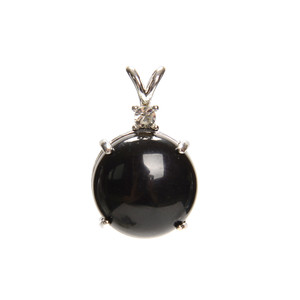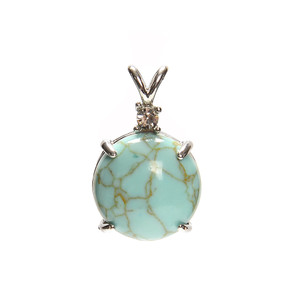
Carnelian, Agate, Dyed, Round, One Pendant with Crystal, 26x16mm
Carnelian, Agate, Dyed, Round, One Pendant with Crystal and Metal Alloy Bail, 26x16mm
Carnelian is a variety of Chalcedony. It is often a solid color, but it may also be banded, in which case it would be jointly classified as both Agate and Carnelian. Agates are primarily formed within volcanic and metamorphic rocks. Carnelian is one of the best known and least expensive variety of chalcedony.
Carnelian is a semi opaque to highly translucent mineral commonly used as a semi-precious gemstone. The color can vary from pale pink, orange to a deep rusty brown, though it is most known for its brilliant orange and red-orange crystals. Carnelian is colored by impurities of iron oxide.
Most commercial carnelian comes from India, but it is mined world-wide. Other sources also include Brazil, Egypt, Russia, Indonesia, Germany, and Uruguay.
The name Carnelian has its roots in the Latin 'carnis' meaning flesh. The thought is that either the stone itself resembled flesh or it looked like the flesh of a fruit called cornel which also got its name from 'carnis'. Carnelian was recovered from Bronze Age finds. The Hebrew sardius (dark Carnelian) was the first stone in the High Priest's breastplate and is mentioned other places in the Bible. The ancient Egyptians called Carnelian "the setting sun."
Hardness 7
The pendants were cut, drilled and polished in China
These beads are dyed with the introduction of coloring agent into a gemstone to give it new color, intensify present color or improve color uniformity.
Metal Alloy is a metal made by combining two or more metallic elements, base metals, to give greater strength or resistance to corrosion. In mining and economics, base metals refer to industrial non-ferrous metals excluding precious metals, like silver, gold, and platinum. Base Metals include copper, aluminum, nickel, tin, zinc antimony, bismuth, lead and many more. Metal Alloy, also known as Pewter and is usually a tin based alloy 85-95% of the time but could also be zinc based.
In December of 1994, The US Safe Drinking Water Act defined Lead-free as having less than 0.25% lead content. Most newly made solid pewter on the market today is considered lead free by these standards. But it is still recommended to not give children Metal Alloy jewelry if there is any chance, they will put it in their mouths!







